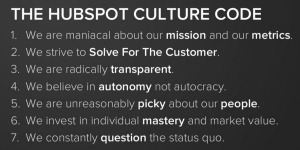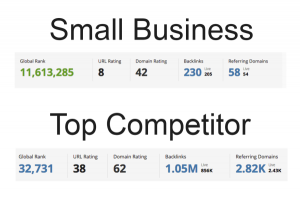
What is Strategy & Why is it Important?
The definition of strategy is multifaceted. Its broadest meaning is to provide a game plan for how the organisation will achieve its stated goals. This game plan is typically focused on achieving commercial and/or positioning success in the marketplace. This type of strategy will outline a series of tasks and actions required to execute the plan and achieve objectives within a defined period of time. They can take on different directions in their effort to achieve a winning outcome. The key directions identified by business authors[1] tends to fall into three main categories:
- Doing something new.
- Building on what you already do.
- Reacting opportunistically to emerging possibilities.
Designing a winning strategy has become a necessary perquisite for companies and government entities to succeed in today’s hyper-competitive environment. Aggressive competitive forces exist in almost every industry and government sector. These forces are driven by globalisation, sophisticated technologies and disruptive business models. Together these forces have diminished the ability for organisations to compete on traditional dimensions such a providing low prices. Today, organisations are required to be innovative in their strategies to avoid becoming irrelevant in a fast-changing and crowded marketplace. To achieve market differentiation organisations need to apply best practice methodologies for strategy formulation. This will enable them to achieve a game plan that is realistic, achievable and designed using a fact-based approach.
Strategies can serve multiple purposes. In an organisation there are usually multiple strategies operating at the same time. A master business strategy provides the whole-of-company plan for how it will succeed in the marketplace. Secondary market supporting strategies will define specific strategies for achieving success with customers. These market supporting strategies would cover such areas as: go-to-market, marketing, and customer experience. The third level of strategies provide the plans for organisational support. These strategies cover departments such as Human Resources, IT, and Finance. Therefore, there are three levels of strategy typically operating in any organisation. These strategies need to tightly align with the master business strategy and achieve individual objectives and targets if the organisation is going to be successful in achieving its overall larger goals.
The methodology used to design a strategy will ultimately determine whether the design achieves the purpose it was intended for. Too often strategies are developed using poorly conceived ideas and practices that lead to equally poorly executed plans unable to achieve their objectives. The primary focus of this paper is to outline best practices in strategy formulation to help reduce the risk of failure.
Problematic Practices in Strategy Design
There are some common mistakes made when organisations embark on an exercise to formulate a strategy. The fundamental problem associated with poorly conceived strategies lies in not following a structured process when formulating the strategy, or taking short-cuts along the way. This type of approach leads to incorrect conclusions and flawed strategy design.
The importance of adhering to a structured process is not properly understood. On the surface the task of formulating a strategy may appear simple, but there is enough evidence of poorly conceived strategies to highlight areas of concern. These issues reinforce the need to take a structured approach for strategy design to avoid the downstream consequences of an ill-conceived strategy. Some of the common mistakes include:
- Poor scope of work definition for external consultants: the requirements for the strategy design are flawed so everything developed by the consultants is also flawed
- Assumptions are not validated: a number of assumptions are used to formulate a strategy but no validation is made to verify the accuracy of the assumptions. The foundations to the strategy are flawed leading to incorrect conclusions
- Internal capability is not adequately considered: without proper consideration for the organisation’s ability to execute, the strategy becomes unachievable
- No validation with the marketplace: strategies lacking external market validation often do not achieve their end objective
- Implementation plan poorly scoped: the game plan without clear implementation tasks and milestones is likely to be poorly executed making it of little value to the organisation
All of these problematic practices can be avoided if you follow a structured process based on best practices.
Best Practice Methodology for Strategy Design
Strategies that achieve their objectives have some key characteristics. These are:
- The strategy is tightly aligned with the organisation’s high level business goals
- They are based on factual evidence or validated assumptions
- They closely consider the organisation’s capabilities and capacity to execute
- They validate the assumptions of the strategy with the marketplace before executing
- The implementation plan for execution is achievable within the set timelines
Best practice strategy development is based on two fundamental pillars:
- A scientific approach is adopted: this means conclusions are drawn from facts rather than opinions or secondary sources
- The organisation can execute the strategy: regardless of how great the strategy might be, if the organisation is unable to execute then the strategy is worthless.
These pillars are the basis for any well-developed strategy. By following a structured process you can achieve a strategy based on these two key pillars. The best practises for developing a strategy are based on 13 key steps. These steps should be followed to enable you to achieve a strategy design with the highest probability of meeting its objectives and adding the desired value back to the organisation. The steps to take are as follows:
- Organisation’s vision and mission needs to be clear and realistically achievable: all strategy development should aim to align with the master organisational strategy. If the vision of the organisation is vague or unachievable then all subsequent strategies developed to meet the vision will be flawed. Avoid flowery and vague statements like “we want to be number one in the marketplace…” This type of statement leaves it open for interpretation and strategies may end up achieving a multitude of different outcomes. Specific statements about how the company intends to differentiate itself in the marketplace will focus people and their thinking when formulating the strategies to meet the organisation’s higher level objectives.
- Adopt a top-down approach to strategy design: The best way of ensuring your strategy achieves the higher goals for the company is to adopt a top-down approach to formulating the strategy. This means top management have to articulate the concepts of what they want to achieve and departmental managers have to determine the various aspects of their department that need changing to meet these objectives. The top-down approach ensures the tasks to achieve the strategy are fit-for-purpose. Adopting a bottom-up approach can lead to a strategy that encompasses weaknesses in the organisation. The design of the strategy, using this approach, can end up shaped largely by internal interests as opposed to wider market-driven forces.
- Identify what the strategy is for: This may sound like an obvious step but as outlined previously there are many types of strategies operating in an organisation. It’s important to be as specific as possible about the area the strategy is designed to impact and its purpose. Start by answering the following questions:
- Which area of business is this strategy for?
- What is the strategy designed to do?
- Who is accountable for the development of the strategy and its execution?
Answering these basic questions enables you to narrow down the scope of the strategy and also ensures there is no overlap with other strategies operating in the organisation.
- Set a high-level objective aligned to the Company’s master strategy: strategy formulation will involve multiple stakeholders in brainstorming sessions to design the strategy. Often this can lead to disparate views and directions. Identifying a high level objective for the strategy will help ensure the stakeholder’s are focused. It’s a good idea to make the objective clearly visible for all participants in any workshop to easily refer back to the primary objective of the strategy and realign the brainstorming towards a common goal. The objective should be clearly aligned to the Company’s master strategy for how it intends to compete in the marketplace. For example, if the organisation primarily aims to compete on low prices then a strategy to be developed for supply chain needs to provide the plan for how supply chain will enable the company to achieve these low prices for customers.
- Gather facts: before embarking on any workshop for strategy formulation start by collecting facts. These facts should cover all relevant areas related to formulating your strategy. It’s important to take a fact based approach to creating your strategy to ensure it is based on sound empirically sourced information rather than hypothetical or opinion based information. If, for example, you are designing a marketing strategy you should collect some of these key facts:
- Marketing budget
- Current cost to acquire a customer
- Customer lifetime value
- Cost of customer retention
- Target customer profile
- Response rate per medium
- Cost per medium for 1,000 prospects reached
This is not the entire list but having these facts on hand will help ensure your marketing strategy is based on factual information and not guesses.
- Undertake a S.W.O.T. analysis: once you have gathered the important facts you will need to apply a S.W.O.T. analysis to your strategy formulation. This is the first of the brainstorming sessions you need to hold to form your strategy. In this analysis you need to identify the external opportunities and threats that are most likely to influence your high level objectives. Also, the internal strengths and weaknesses of the department or company need to be identified. The outcomes from the S.W.O.T. analysis should reference factual information gathered in the previous step to enforce the basis of the conclusions drawn. The S.W.O.T. outcomes should be visible on a large display to enable stakeholders to easily refer to them and achieve the next step of the process.
- Leverage strengths & opportunities and identify gaps: the S.W.O.T. analysis will provide you with the key elements to build a strategy to differentiate yourself in the marketplace and achieve your higher level organisational goals. Leveraging from existing strengths enables you to build on what you already do well. Drawing on these strengths gives you a higher probability of executing your final strategy since it’s based on existing attributes rather than new ones. Leveraging external opportunities also enables you to capitalise on market conditions in your favour. At the same time you will have weaknesses and threats that may compromise your objectives. Any gaps impacting your high level objectives should be identified at this stage.
- Formulate a 1st draft of the strategy: after completing all the previous steps you should now be in a position to create the first draft of your strategy. This draft needs to draw conclusions for the previous facts and analysis. These conclusions should enable you to answer questions such as:
- How you will achieve your objectives
- Why this strategy will work and meet higher level company objectives
The draft strategy does not need to be perfect. It does however need to be substantive enough to enable you to progress to the next step.
- Undertake a comparative study of other organisations: once you have created a draft strategy its then time to sanity check it. The first check will be to determine how unique your draft strategy is to competitors with similar characteristics as your organisation. Research should be taken on competitors to identify what similarities and differences exist in your approach. In this analysis your aim is to collect factual evidence why your strategy is likely to work and why it is different enough to give the Company a unique advantage. This comparative analysis should always occur after your initial first draft to avoid stakeholders from imitating a competitor strategy that is not unique to their organisation.
- Formulate the 2nd draft of the strategy: findings from your comparative study should enable you to revise your initial first draft of the strategy to create a more considered second draft. The revised draft strategy is again drawing on new factual evidence you have gathered about how your competitors are doing things so the second version of the strategy should now be getting closer to hitting the desired target.
- Outline key initiatives & timelines to execute the strategy: after your second draft you will be in a position to outline the key initiatives you need to achieve to execute your strategy. The tasks to complete need to be accompanied by timelines and a definition of how each milestone will help achieve the strategy objectives. Keep the tasks at a high level at this stage as sub-tasks can be developed once your strategy is approved. If you are developing a customer experience strategy you may identify a task as follows:
- Measure organisational customer centricity: 8 weeks to complete: required to determine areas of change within the organisation to become more customer centric.
- Validate the strategy with impacted people and/or customers: every strategy that is executed will impact people in the organisation and customers in the marketplace. The only sure way of determining if you have a strategy with a high probability of success is to go directly to the impacted people and ask them some questions. Validation of your strategy is an important step before finalising your strategy. This is the key step that most organisations tend to falter on. Market research is required to gather the likely responses of key stakeholders if the strategy is implemented. The validation needs to confirm a causal relationship between the organisation doing x things and y outcomes occur. The stronger you can validate the impact of the two variables the higher probability your strategy will actually work. Validating the strategy in the field is similar to creating a prototype of a product before mass production. The prototype gives designers a final opportunity to review all the results and make appropriate changes before launching a final strategy. At this stage it may be worthwhile testing more than one strategy to determine which is likely to achieve the desired results. During this testing phase you are likely to come across new and unexpected responses from stakeholders. The results from this research will form the final set of facts required to formulate the final version of your strategy.
- Finalise your final version of your strategy with an implementation plan: after completing your validation with stakeholders in the organisation and externally, the final step is to review the findings from your research to formulate your final version of the strategy. Tweaking your strategy by using the findings from your research is an important step towards ensuring the final version of your strategy will achieve the desired outcomes from stakeholders and meet the objectives originally outlined and aligned to the master organisational strategy. Once you have made the necessary changes to your strategy, and the implementation plan, you are now ready to get final approval from higher management.
The Value of a Good Strategy
Unfortunately the value of a good strategy is only ever realised when an organisation experiences the impact of a poorly designed strategy that misses its objectives on all fronts. The enormous cost to the organisation can run into the hundreds of millions of dollars and in the worst case can end bankrupting a company. The cost of implementing a poorly designed strategy significantly outweighs the investment in developing a strategy using the best practices outlined.
The 13 steps outlined may appear too detailed but each step is required to build a case based on facts and reliable evidence. The final validation of the strategy with stakeholders is also a required step in the process to ensure assumptions used in the formulation of the strategy are a true reflection of the likely causal relationship and outcomes to expect if the strategy is implemented.
Most strategies that don’t achieve their outcomes are formulated around exaggerated projections that have no scientific basis. Caution should be made about the use of research firm findings for determining the size of a marketplace or projected growth of a particular product offering. Many organisations have fallen foul of this trap and have paid hefty prices for basing their strategies around lofty and unrealistic numbers. Ultimately, it’s better to have a strategy you can execute and achieve a realistic positive outcome than to create a “Disney-like” strategy that ends disappointing a large number of stakeholders.
[1] What is Strategy, Again? Andrea Ovans, Harvard Business Review, May, 2015
Business & Finance Articles on Business 2 Community(212)
Report Post







